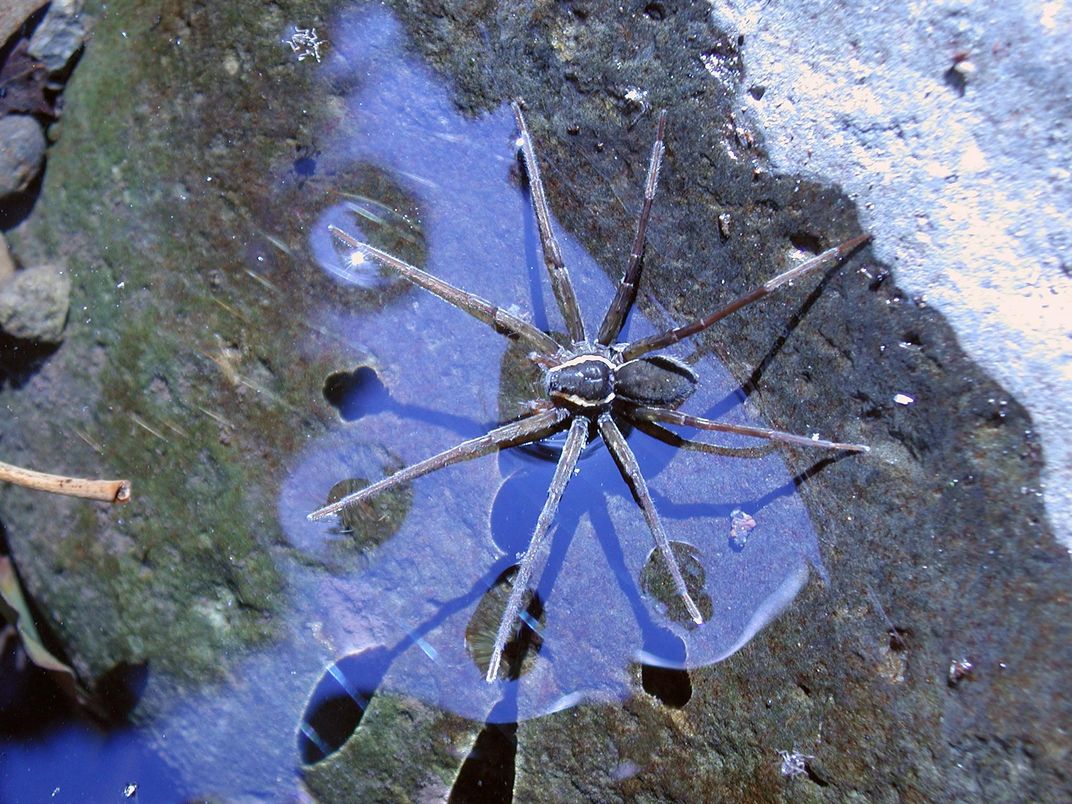Recently Discovered Spider Is Named After Physicist Brian Greene
About the size of the human palm, the “Brian” spider can swim and hunt fish
/https://tf-cmsv2-smithsonianmag-media.s3.amazonaws.com/filer/4d/bf/4dbff7b0-8614-4d64-8c45-7343dfaa5a4f/dolomedes_briangreeni_female_with_egg_sack.jpg)
Columbia University researcher and professor Brian Greene is perhaps best known as a leading theoretical physicist and a proponent of string theory. Now, he has the honor of sharing his name with a recently-discovered species of water spider that can surf small waves and hunts small fish and toads.
The Dolomedes briangreenei, as researchers have named the spider, may not be a physics expert (or a Smithsonian Magazine columnist) like its namesake, but it does know a thing about waves, as the Australian Associated Press (AAP) reports. About the size of a human palm, the spider has the novel ability to swim and surf on the water’s surface, while using vibrations in the water to help hunt its prey.
"Physics is all about waves; understanding the universe is all about waves," Greene said when the spider was presented to him at the opening of the World Science Festival in Brisbane this week, according to Mashable Australia's Geraldine Cremin. “With the announcement last month of humankind’s first detection of gravitational waves—ripples on the surface of space and time—I am particularly honored to be so closely associated with a spider that has its own deep affinity for waves."
Because the spiders are such strong swimmers, they can catch prey up to three times their size, including small fish and toads. When disturbed, the spider can even dive and hide underneath the water for up to an hour before resurfacing, Erik Shilling writes for Atlas Obscura.

"These spiders sit there on the water and then all of a sudden an insect will hit the water and the spider races out to get it, grabs it, dives under the water and then swims back to the shore and starts eating it," Robert Raven, Principal Scientist of Arachnology at Brisbane, Australia’s Queensland Museum, tells Cremin.
Researchers didn’t have to go far to find the “Brian” spider: as it turns out, the species is native to freshwater streams around Brisbane. In fact, it seems that the spider has long been a stealthy ally in the fight against pests like the infamous cane toad, the AAP reports. The researchers found that the palm-sized spider has a significant impact on managing the invasive toad in the region by hunting it for food. However, while it may be big, people have nothing to fear from this particular arachnid.
"I've been bitten by this spider and it’s not particularly dangerous," Raven tells Cremin. "It just stung for a little while."
The “Brian” spider will soon be on public, permanent display at the Queensland Museum.

